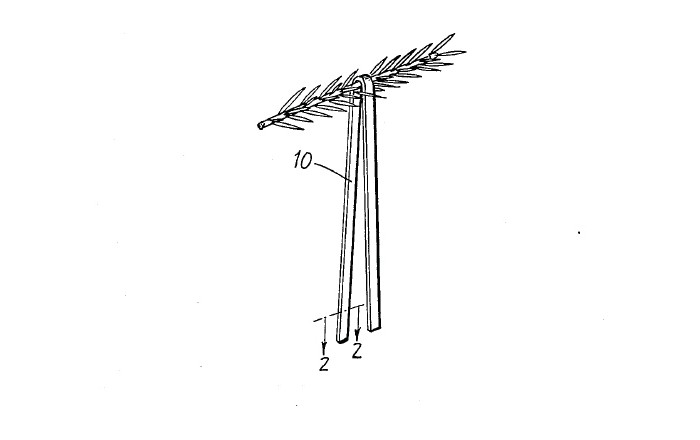Advertisement
Grab your lab coat. Let's get started
Welcome!
Welcome!
Create an account below to get 6 C&EN articles per month, receive newsletters and more - all free.
It seems this is your first time logging in online. Please enter the following information to continue.
As an ACS member you automatically get access to this site. All we need is few more details to create your reading experience.
Not you? Sign in with a different account.
Not you? Sign in with a different account.
ERROR 1
ERROR 1
ERROR 2
ERROR 2
ERROR 2
ERROR 2
ERROR 2
Password and Confirm password must match.
If you have an ACS member number, please enter it here so we can link this account to your membership. (optional)
ERROR 2
ACS values your privacy. By submitting your information, you are gaining access to C&EN and subscribing to our weekly newsletter. We use the information you provide to make your reading experience better, and we will never sell your data to third party members.
K-12 Education
AACT celebrates 10-year anniversary, reflects on transforming science education
Association offering classroom resources, community, and professional development to educators marks a decade
by Sara Cottle
August 30, 2024
| A version of this story appeared in
Volume 102, Issue 27

In September 2014, the American Association of Chemistry Teachers (AACT) launched as “the first and only national membership organization by and for K–12 teachers of chemistry.” Its creation came after the American Chemical Society asked what it, as one of the world’s largest scientific societies, could do to transform science education in the US.

“Since its inception, AACT has focused on three big goals: developing classroom resources, providing professional development, and increasing networking,” says Adam Boyd, director of AACT.
In the past 10 years, AACT has published over 1,100 lesson plans, labs, activities, and demos—all written and developed by chemistry teachers, Boyd says. It has organized over 220 webinars and a large number of on-site workshops. And it has assembled a community of 7,300-plus members from 80 countries. The AACT website, where teachers can access classroom resources and professional development support, has received more than 10 million visits since its launch.
Boyd says AACT’s greatest accomplishments over the past decade include growing the community and the resources it can offer. The association was able to successfully connect and support teachers during the COVID-19 pandemic—a crisis that made teaching and educational resources vital topics in US households and news outlets.
“AACT was well positioned to support teachers during the rapid transition to remote instruction during the COVID-19 pandemic,” Boyd says.
For an extended period during the pandemic, AACT unlocked its entire resource library—comprising activities, animations, projects, simulations, and videos—for elementary, middle, and high school classes, as well as for advanced placement and general chemistry levels. The “student pass” feature was expanded to accommodate teachers who needed to assign videos or ChemMatters articles for students to review separately. Kitchen chemistry and at-home activities were compiled for remote teaching. In addition to classroom resources, AACT organized webinars on remote instruction, partnered to organize a virtual ChemEd conference, and published articles by teachers that included tips for remote instruction and meeting the challenges precipitated by COVID-19.
“During the pandemic, AACT received record-high web visits, membership, and participation,” Boyd says. “I’m particularly proud of our staff and governance leaders for their service, creativity, and perseverance during a challenging time.”
While data from the National Center for Education Statistics (NCES) indicate that the percentage of US public school teachers who stayed at their school, around 84%, and those who left the profession, around 8%, remained about the same over 2011–12 and 2012–13 to 2020–21 and 2021–22; 2024 might be on its way to telling a different story. NCES hasn’t yet released data for 2022–23 or 2023–24, but data from Statista suggest that the number of “quits” by teachers and other educational staff in May 2024 were among the highest levels since April 2022. In addition, based on research conducted with US educators and other school professionals in the 2021–22 academic year, McKinsey & Company estimated that roughly 900,000 US teachers planned to leave their job before the next year. But the management consulting firm noted that a plan to leave isn’t always acted on.
Teachers list nuanced and various reasons for leaving, but two common ones are work-life balance and support. The NCES data for 2021–22 show that teachers with less than 3 years of experience in public schools are not as likely to stay in teaching as those with 4-plus years.
“Providing teachers with resources they need is critical,” Boyd says. “This can be especially true for early-career teachers or those with more teaching experience who are new to teaching chemistry specifically.”
Boyd says that AACT research has consistently shown that resources have been teachers’ greatest need. Provision of resources has also been their greatest area of satisfaction with the association’s offerings.
“Our goal is to save teachers precious time by working with their peers to curate a large collection of accurate, reliable, and safe classroom resources that can complement any curriculum and which are aligned to NGSS [Next Generation Science Standards],” Boyd says.
AACT also works with teachers to write articles and lead webinars on available resources, sharing strategies and best practices for engagement. This lowers the barriers to success for everyone, Boyd says.
He shared some key findings from the AACT brand assessment at its launch. Of 514 responses, 74% of members said it was important for a professional association to share effective teaching and learning practices; 72% said it was important that an association provide them with resources for teaching chemistry; and 69% said it was important to have opportunities to network and collaborate with other teachers. The findings reflected the importance of offering resources as well as how to best deploy them.
“AACT has come a long way in 10 years, and I’m proud of all that we’ve accomplished,” Boyd says. Recognizing successes goes hand in hand with anticipating new challenges. A few that Boyd has on his radar are ensuring that everyone feels encouraged to participate in the community in a way that works for them; helping teachers navigate the uses and limits of artificial intelligence in the classroom; continuing support to help alleviate burnout; and enhancing safety, which is particularly relevant to chemistry and science teachers.
Looking at AACT today, Boyd would like to “especially recognize the work of the teacher-leaders who helped envision and launch AACT and our many devoted staff members. Without them, AACT would not be what it is today.”
Resources in action: Martin Palermo of William Floyd High School
Martin Palermo teaches Regents/Honors Chemistry at William Floyd High School and is currently AACT’s governing board president. Palermo started his teaching career as an adjunct instructor at Stony Brook University but has been teaching science at William Floyd since 2007. He has been a member of AACT for 6 years.

Here, Palermo discusses what he’s gained from being a member of AACT. His responses have been edited for length and clarity.
As a teaching professional, what have you gotten out of being a part of AACT?
In addition to the high-quality lessons, activities, and simulations, I have found valuable professional development opportunities through numerous webinars I’ve attended. Most recently, I watched Matt Ford’s webinar “Making Sense of Covalent Bonding: Insights from the Most Frequently Asked Questions in a Chemistry Discussion Group,” and Andrea Gearhart’s “Particulate Diagrams: Facilitating the Visualization and Understanding of Particle Level Behavior in Matter.” What’s also great about these webinars is that they are archived so members can watch them at any time.
How are the resources AACT offers different from other teacher organizations, and what is the value in that as a chemistry teacher?
What sets AACT apart from other organizations is that the resources are for chemistry teachers by chemistry teachers (although teachers of other disciplines can definitely find valuable resources here as well). I also feel that you get a multitude of resources and support for very little cost compared to some other teacher organizations, as well as a network of over 7,000 chemistry educators.
What would you like to see more of in AACT?
I would like to see a continued increase in Next Generation Science Standards (NGSS)–focused lessons and resources, as the majority of states have or will be shifting to standards based on NGSS.
Do you have any favorite resources that you’d recommend to new chemistry teachers or any favorites you’d recommend to new members who are starting back to school?
Some of my favorite AACT resources are the metals in aqueous solutions simulation and the voltaic cell simulation. These concepts can be difficult for students to visualize; using these simulations, students can see what is going on at both the macroscopic and the molecular level.
The aqueous solutions simulation can be found at cenm.ag/aqsol-sim. And the voltaic cell simulation can be found at cenm.ag/voltaic-sim. More information about AACT can be found on its website, teachchemistry.org.





Join the conversation
Contact the reporter
Submit a Letter to the Editor for publication
Engage with us on Twitter